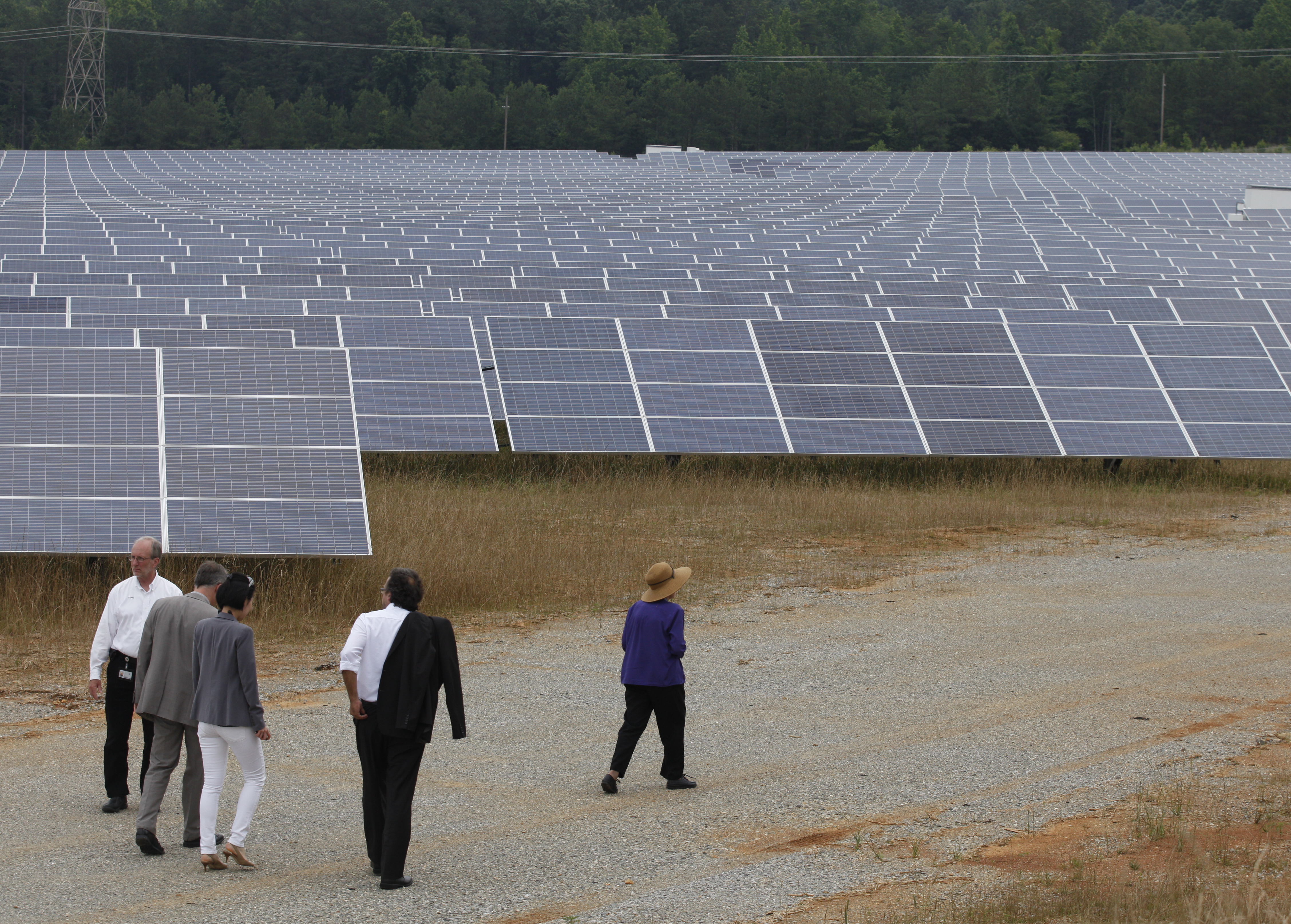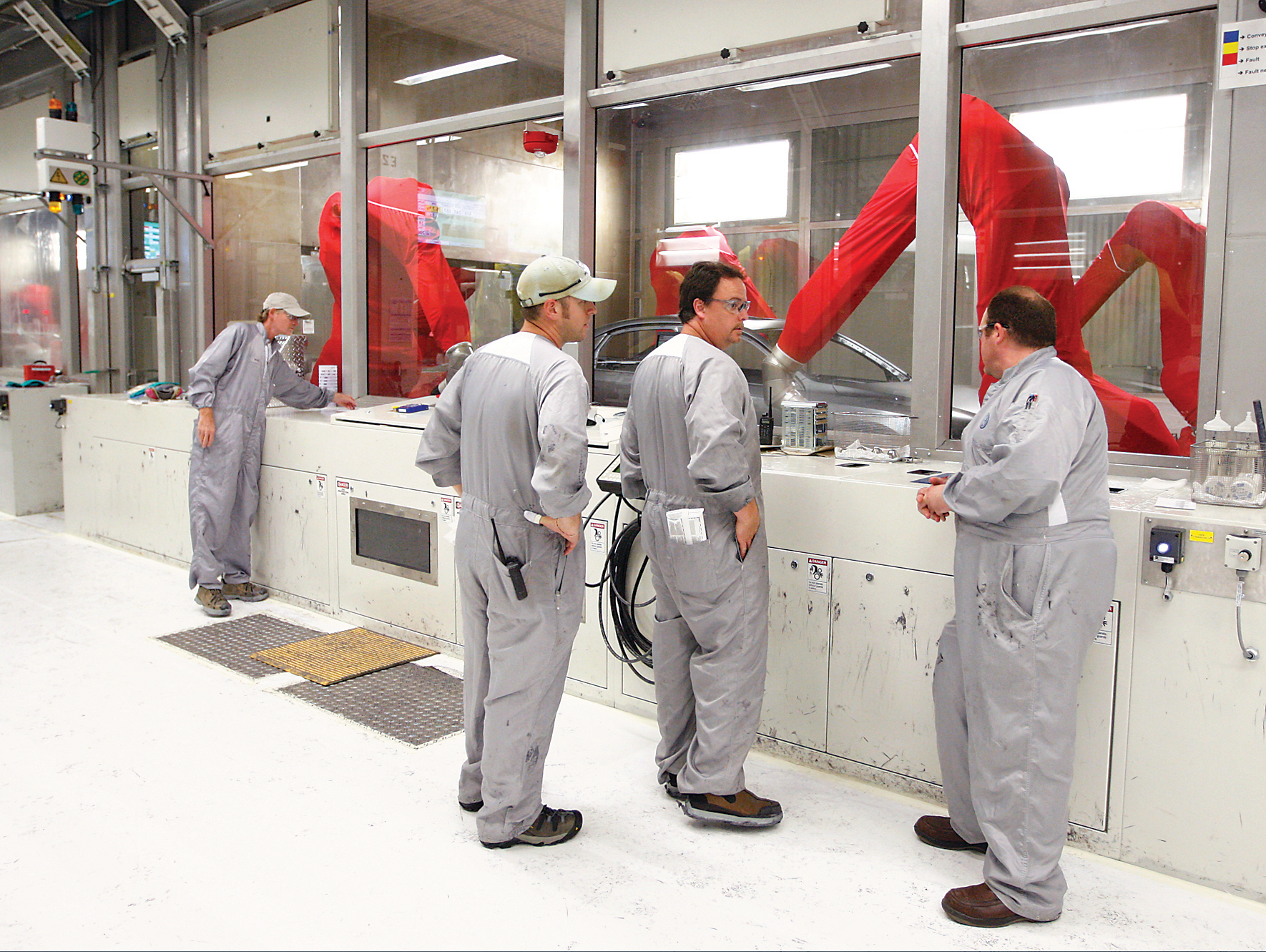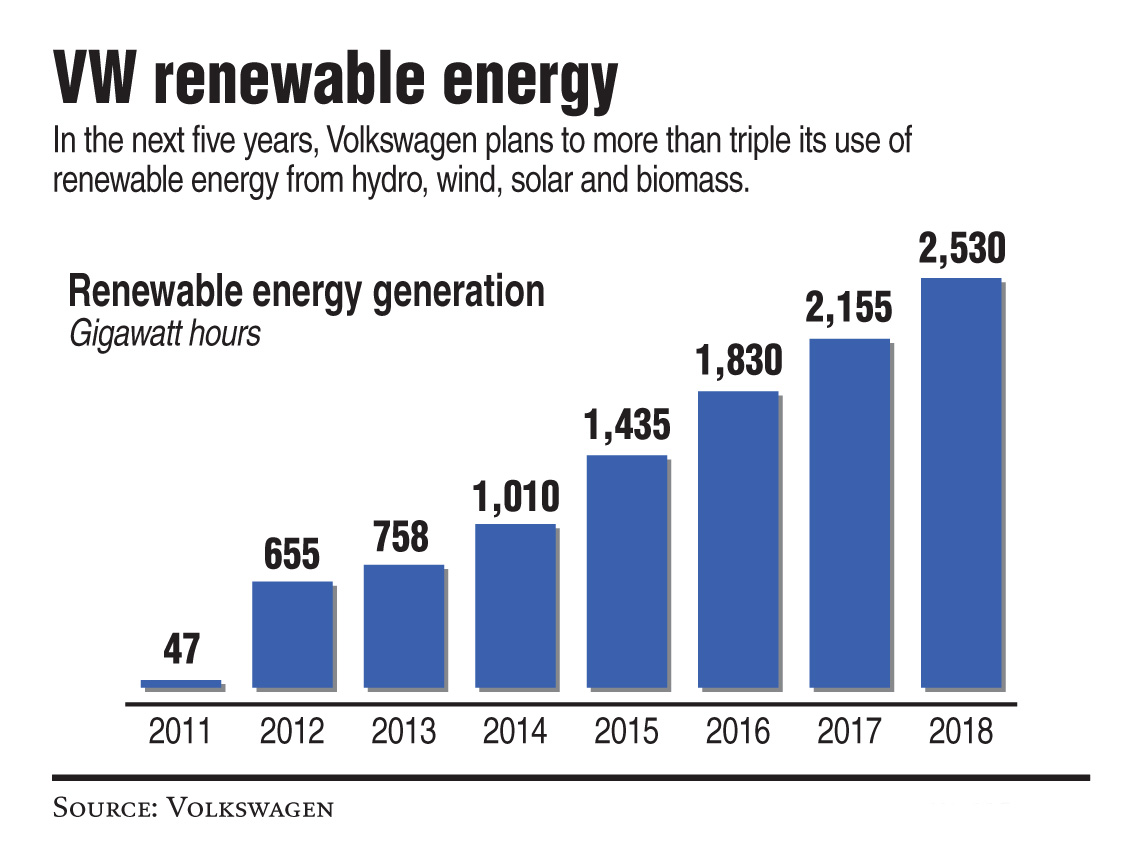 People walk near solar panels arranged in line on 33 acres of property Wednesday at the Chattanooga Volkswagen Plant in Chattanooga. Volkswagen's Chattanooga manufacturing plant has implemented energy management and environmentally friendly procedures which will be used in other Volkswagen plants across the globe.
People walk near solar panels arranged in line on 33 acres of property Wednesday at the Chattanooga Volkswagen Plant in Chattanooga. Volkswagen's Chattanooga manufacturing plant has implemented energy management and environmentally friendly procedures which will be used in other Volkswagen plants across the globe. Workers monitor robotic arms which spray a top coat of paint onto a Passat on Wednesday in the paint shop of the Chattanooga Volkswagen Plant in Chattanooga, Tenn. Volkswagen's Chattanooga manufacturing plant has implemented energy management and environmentally friendly procedures which will be used in other Volkswagen plants across the globe.
Workers monitor robotic arms which spray a top coat of paint onto a Passat on Wednesday in the paint shop of the Chattanooga Volkswagen Plant in Chattanooga, Tenn. Volkswagen's Chattanooga manufacturing plant has implemented energy management and environmentally friendly procedures which will be used in other Volkswagen plants across the globe.In the paint shop at Volkswagen's Chattanooga plant, tall robotic arms coat the metal frames of Passat after Passat in white, gold, black and tan.
Each arm is covered in thin red fabric. Some end in pinchers, some in nozzles. One arm pulls up the hood of the car, another reaches underneath and paints it. The robots move with precise speed, coming to a stop exactly where they should, always.
But the most notable part of this Volkswagen paint shop isn't the robots, or the speed, or the dryers. It's what's not there.
The shop skips the primer. Chattanooga's Volkswagen paint shop has one less spray booth and dryer than a normal VW paint shop and doesn't put on a primer coat of paint. And because they've cut that step, the process uses 20 percent less energy.
Volkswagen implemented the primer-free paint process for the first time in the Chattanooga plant. And now, Chattanooga's energy-efficient paint process -- and the facility's overall LEED-certified design -- is being copied in Volkswagen plants around the world. The German automaker is aiming to reduce its energy consumption by 25 percent and triple the renewable energy it uses by 2018, part of a program called Think Blue.
"This plant is now a benchmark for existing plants," said Jan Spies, Volkswagen head of factory planning. "When they think about their migration path on the Think Blue way to save 25 percent, they have to compare themselves to this plant. It's the benchmark of what is doable and what is possible to be paid for."
The Chattanooga assembly plant is the first Volkswagen plant to earn a Leadership in Energy and Environmental Design platinum certification, which means it meets stringent environmental standards.
Rainwater is captured and reused to cool equipment and flush toilets. Six-inch insulation helps save energy. A field of 33,600 solar panels supplies about 12 percent of the factory's power.
And as Volkswagen builds new plants -- seven in China and an Audi plant in Mexico are in the pipeline -- designers are using the Chattanooga plant as a blueprint, Spies said.
It's not a one-to-one copy, but some major components of the Chattanooga plant, like the plant's signature bridge, are being repeated throughout the world.
"The bridge here was made because the elevation of the parking lot and the main plant were different," Spies said, pulling up a blueprint of a plant in China. "It's the same bridge. We thought it was such a brilliant idea to keep people with watches and buckle belts away from the car, to keep quality high and avoid scratches, that in the Chinese plants we are copying that bridge, even though you have to step up at the beginning."
But while the Chattanooga plant has all the infrastructure to be about 40 percent more energy-efficient than a typical manufacturing plant, Volkswagen is still requiring the plant to drop its energy use by 25 percent by 2018.
And that presents a unique challenge, said David Gustashaw, energy and utility specialist at Volkswagen Chattanooga. The plant is running so efficiently that finding ways to save more energy comes down to the people.
"There's just not a lot of equipment gains you can get from where we're at," he said. "So we're focused on how we can operate this place. We need to change attitudes and behaviors so that people operate the system as efficiently as possible."
In the plant's body shop, turning the equipment off during breaks, lunch and between shifts saves enough energy to power 60 Chattanooga households for a year. But the plant only just started doing that in 2013.
"This is how we are attacking energy efficiency on a site that is already incredibly energy efficient because of LEED standards," Gustashaw said.
Contact staff writer Shelly Bradbury at sbradbury@timesfreepress.com or 423-757-6525.


